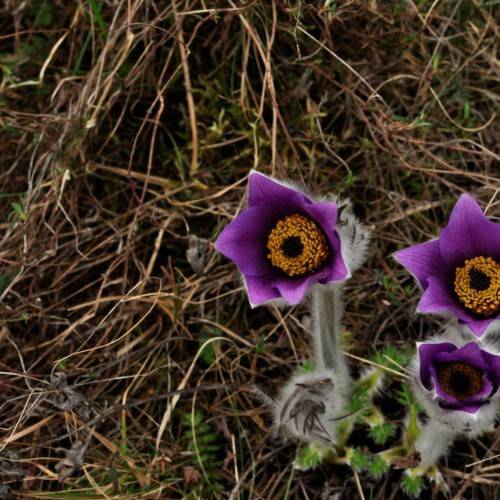
pasque flower
Pulsatilla halleri subsp. taurica
Cycle:
Herbaceous Perennial
Watering:
Average
Hardiness Zone:
5 - 7
Flowers:
Flowers
Sun:
Full sun,part shade
Leaf:
Yes
Growth Rate:
Low
Maintenance:
Low
watering
The pasque flower (Pulsatilla halleri subsp. taurica) should be watered once a week, using about 1-2 cups of water and ensuring that the soil is completely saturated. When temperatures begin to drop in late autumn, the amount of water can be reduced to about half a cup, once every few weeks. Watering should be stopped when the plant is dormant over the winter, and resumed in early spring when temperatures begin to rise.
sunlight
The pasque flower (Pulsatilla halleri subsp. taurica) is native to the Taurus Mountains region in southern Turkey and prefers part shade to full sun, with at least 3-4 hours of direct sunlight per day. Sunlight intensity should be highest during the morning and early afternoon and can be slightly reduced during the middle of the day. Direct mid-afternoon sun should be avoided. Too much sunlight can cause the leaves to scorch while too little sunlight can result in weak and spindly growth and poor flower production.
pruning
Pasque flower (Pulsatilla halleri subsp. taurica) should be pruned in late winter to early spring before new growth begins. About half of the plant’s stems should be cut back to ground level as this encourages bushiness and strong new growth. Dead and weak stems can be removed to create a more attractive and healthier plant. This can be done either selectively to keep the overall size and shape of the plant the same or more aggressively to reduce the size of the pasque flower. Avoid pruning into the center of the plant as this can damage the main part of the plant.
